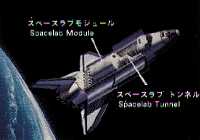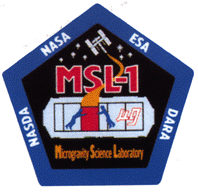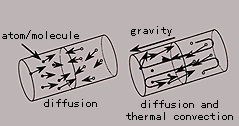|
|||||

| First Microgravity Science Laboratory |
| Outline of First Microgravity Science Laboratory |
 The
Microgravity Science Laboratory (MSL) program is a series of microgravity
experiments using Space Shuttle/Spacelab proposed by the U.S. National Aeronautics
and Space Administration(NASA). The
Microgravity Science Laboratory (MSL) program is a series of microgravity
experiments using Space Shuttle/Spacelab proposed by the U.S. National Aeronautics
and Space Administration(NASA).Five space agencies worldwide,which is NASA,National Space Development Agency of Japan(NASDA),European Space Agency(ESA),German Aerospace Center(DLR) participated in MSL-1 launched by STS-94 in July 1997 in order to conduct material experiments under microgravity. NASDA conducted material experiments with Large Isothermal Furnace(LIF).NASDA developed necessary technologies for the Space Station experiments by participating in this program. |
Originally MSL-1 was launched as STS-83 in April 1997, however due to the malfunction of the fuel cell of the Shuttle its mission duration was shortened and as an re-flight of this mission STS-94 was planned.
| STS-83 Mission Overview | |
Flight No. |
STS-83 |
Launch date |
April 4 1:21p.m. 1997(EST) |
Launch Site |
Kennedy Space Center NASA U.S.A |
Orbiter |
Columbia |
Landing Date |
April 8 1:33 1997(EDT) |
Landing Site |
Kennedy Space Center NASA U.S.A |
Orbital Inclination |
28.45 degrees |
Duration |
3 days,23 hours,12 minutes |
Crew |
7 |
Number of Equipment |
12 NASA=8, NASDA=1, ESA=1, DLR=2 |

| STS-94 Mission Overview | Inside of Spacelab |
|---|---|
| NASDA equipment | Technologies expected to be developed |
| Microgravity Experiments | NASDA Experiments planed for MSL-1 |
| Related NASA Sites | STS-94 Crew |
| STS-94 Mission Overview |
 |
| ||||||||||||||||||||||||||||
| Features of Large Isothermal Furnace (LIF) : |

|
| Experiment Themes and Principal Investigators (PIs) Using LIF |
| Diffusion, the Key word of MSL-1 |

Last Updated : March 18, 1998

|